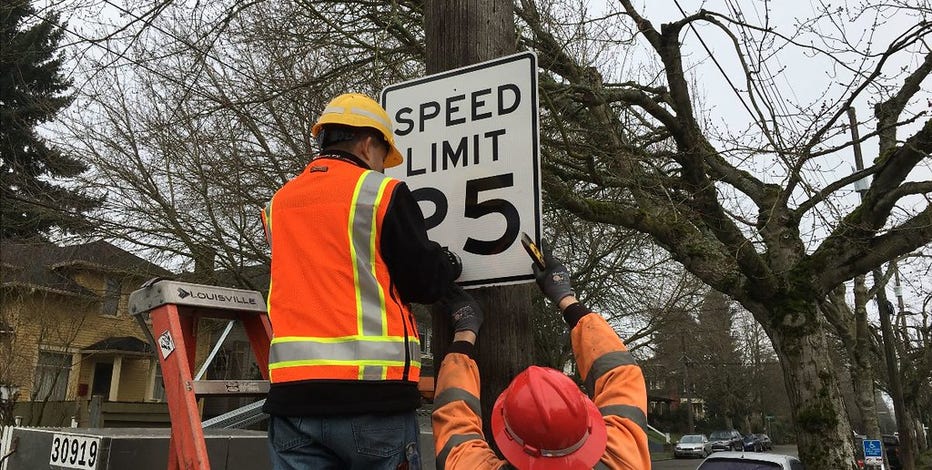Tacoma to reduce speed limits starting Jan. 1, 2023

Tacoma to reduce speed limits starting Sunday
With the new year comes new changes to the law. And in Tacoma, the plane is to save lives by dropping speed limits.
TACOMA, Wash. - The City of Tacoma is hoping to save lives by lowering speed limits in the new year.
The speed limit changes take effect on Sunday, Jan. 1, 2023 as part of Tacoma's Vision Zero plan to eliminate traffic deaths by 2035.
The speed limit on residential streets will drop from 25 to 20 mph. It also lowers the speed limit from 30 to 25 mph on streets in four neighborhood business districts, including 6th Ave., Lincoln, McKinley Hill and Old Town.
The changes were passed in August by the Tacoma City Council.
The city has been changing signage and planned to do so through the end of the year.
City leaders say speed reduction is one way they can eliminate deadly and serious injury crashes. They say studies show even this five mile an hour decrease could be the difference between life and death.
Tacoma's latest Vision Zero Plan figures show nearly 80 people are killed or seriously hurt in the city every year.
The city's data also shows between 2016 and 2022, there were 64 deadly crashes, 320 serious injury crashes and 53 crashes involving an impaired driver where someone was either killed or seriously injured.
Their plan also considers street design, changing laws and policies, adding traffic cameras and driver education.
Featured
Seattle installs 2,500 new signs as city lowers speed limit to 25 mph on most major roads
Nearly 2,500 new 25 mph speed limit signs have been installed along 415 miles of arterial streets in Seattle.
City leaders say there will be a grace period between when the law starts and when enforcement begins.
They also say they've implemented a comprehensive outreach campaign to make sure everyone knows what has changed.
Other cities like Seattle have also lowered the speed limit. The emerald city lowered the speed limit citywide to 25 mph.
Seattle Mayor Jenny Durkan first announced the change in speed limits back in December of 2019. The change is part of the city's Vision Zero initiative to end traffic-related deaths on Seattle streets by 2030.


